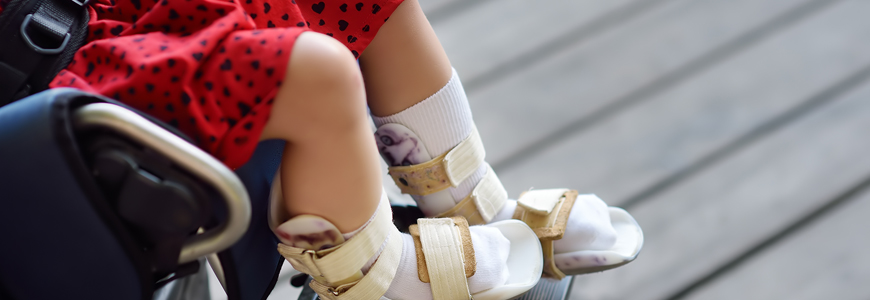The Duke Departments of Orthopaedic Surgery and Pediatrics have jointly appointed Duke’s first pediatric physiatrist to care for children with neuromuscular conditions, including cerebral palsy, stroke, and spinal cord injury. In this Q&A, Christopher D. Lunsford, MD, describes the practice of pediatric physiatry, also called Physical Medicine and Rehabilitation (PM&R).
Question: Pediatric physiatry is a somewhat uncommon sub-specialty, especially in the Southeast. Can you describe your practice and how it enhances patient care?
Lunsford: My practice involves treating muscle overactivity (e.g. spasticity, dystonia) as well as providing comprehensive rehabilitation care (e.g. therapy planning, bracing, rehabilitation equipment). A physiatrist oversees the big picture of gaining or recovering functional skills, like mobility and activities of daily living. In pediatrics, it is rare for children to have these limitations, but it does occur. The support my field has received from both Pediatrics and Orthopaedics at Duke helps to foster the culture of rehabilitation for managing neuromuscular conditions that can help us reach a higher level of care.
Question: What is involved in treating children with muscle spasticity and dystonia?
Lunsford: I start by identifying how a child is physically affected and what we can do to improve their function and support the development of age-appropriate independence. Sometimes, medications or procedures may be helpful, such as botulinum toxin injections. All of this planning helps to ensure we can make progress toward important goals, such as ambulation. Another key to a comprehensive rehabilitation plan is coordinating therapy treatment courses—what to do, how much to do, and when to do it. Patients may have had a long road of rehabilitation before they see me; the goal is not to waste time doing things they have already tried. Families appreciate that extra education on why we are ordering particular equipment, committing to many hours of therapy, and/or trying new medications. We are a team and we need each other to help make the best decisions for their child.
Question: What are your priorities in your new role?
Lunsford: We have made great progress towards restructuring and expanding our Cerebral Palsy and Related Conditions clinic. The weekly clinic is now intradisciplinary, which allows us to be more proactive with multiple services and helps patients broaden their therapeutic and functional goals. Another priority is to collaborate with the Complex-care service, the Special Infant Care clinic, and pediatric palliative care specialists.
